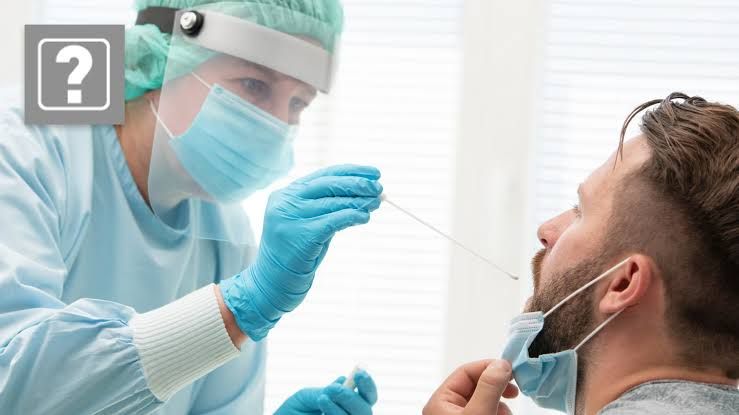
Selection, Collection, and Transport of Throat Swab Specimens for Microbiological Examination
Selection of Specimen:
Throat swabs are primarily collected to diagnose infections caused by bacterial pathogens such as Streptococcus pyogenes (Group A Streptococcus), Corynebacterium diphtheriae, or Neisseria gonorrhoeae. The selection of a throat swab is appropriate when patients present with symptoms like sore throat, fever, tonsillar exudates, or swollen lymph nodes. It is important to collect the specimen before administering antibiotics to avoid false-negative results.
Collection Procedure:
- Preparation: Explain the procedure to the patient and reassure them that it will be quick and cause only mild discomfort.
- Positioning: Ensure the patient opens their mouth wide and relaxes their tongue. Use a tongue depressor if necessary for better visibility.
- Swabbing Technique: Using a sterile swab, gently rub the posterior pharynx, tonsils, and any inflamed areas while avoiding contact with the tongue, cheeks, or teeth to prevent contamination from normal flora.
- Handling the Swab: Place the swab immediately into a sterile transport medium (e.g., Amies or Stuart’s medium) to preserve viability during transport.
Transport Guidelines:
- Transport specimens at room temperature if they are for bacterial culture and deliver them to the laboratory as soon as possible (preferably within 2 hours). If delays occur, refrigeration may be required for certain specimens.
- For viral cultures or antigen detection tests, specimens should be transported on ice in viral transport media like Dulbecco Modified Eagle Medium (DMEM).
Cultivation and Isolation of Viable Pathogens
After receiving the throat swab specimen in the microbiology laboratory:
- Inoculation onto Media: The swab is streaked onto selective and differential media using aseptic techniques to isolate potential pathogens.
- Incubation Conditions:
- Plates are incubated at 35–37°C for 18–48 hours depending on suspected pathogens.
- Aerobic conditions are typically used unless anaerobic bacteria are suspected.
- Observation of Growth: After incubation, colonies are examined for morphology, hemolysis patterns (if grown on blood agar), pigmentation, and other distinguishing characteristics.
Types of Media Used for Throat Swab Culture
The following types of culture media are commonly used:
- Blood Agar (BA): A general-purpose medium enriched with 5% sheep’s blood; it supports most bacterial growth and allows differentiation based on hemolysis patterns.
- Chocolate Agar (CA): Enriched with lysed red blood cells; used for fastidious organisms like Haemophilus influenzae or Neisseria gonorrhoeae.
- Mueller-Hinton Tellurite Agar/Tinsdale Agar: Used specifically when Corynebacterium diphtheriae is suspected.
- Thayer-Martin Agar: A selective medium containing antibiotics; used for isolating Neisseria gonorrhoeae.
Types of Hemolysis
Hemolysis refers to the breakdown of red blood cells by bacterial enzymes when cultured on blood agar:
- Beta-Hemolysis (β-hemolysis):
- Complete lysis of red blood cells around colonies.
- Produces clear zones around colonies.
- Example: Streptococcus pyogenes.
- Alpha-Hemolysis (α-hemolysis):
- Partial lysis of red blood cells resulting in a greenish discoloration around colonies due to oxidation of hemoglobin.
- Example: Streptococcus pneumoniae.
- Gamma-Hemolysis (γ-hemolysis):
- No lysis of red blood cells; no color change around colonies.
- Example: Enterococcus faecalis.
Value of Biochemical Reactions
Biochemical reactions play a critical role in confirming pathogen identity after initial isolation:
- Catalase Test:
- Differentiates catalase-positive organisms like staphylococci from catalase-negative streptococci.
- Coagulase Test:
- Identifies coagulase-positive staphylococci (Staphylococcus aureus) from coagulase-negative species.
- Bacitracin Sensitivity Test:
- Differentiates Group A Streptococcus (S. pyogenes) from other beta-hemolytic streptococci based on sensitivity to bacitracin discs.
- Oxidase Test:
- Identifies oxidase-positive organisms like Neisseria gonorrhoeae by detecting cytochrome c oxidase activity.
- Sugar Fermentation Tests:
- Used for identifying species based on their ability to ferment specific carbohydrates producing acid or gas.
These biochemical tests ensure accurate identification and guide appropriate antimicrobial therapy.







